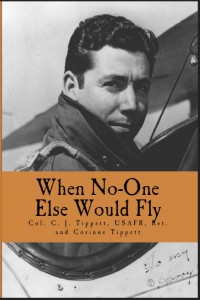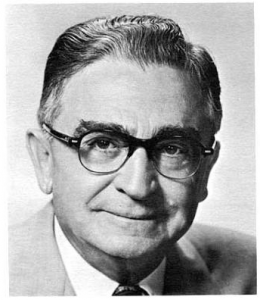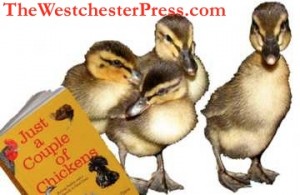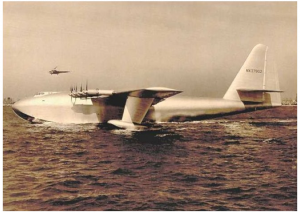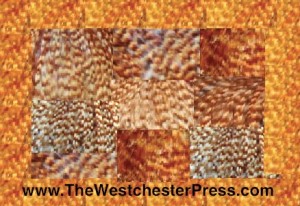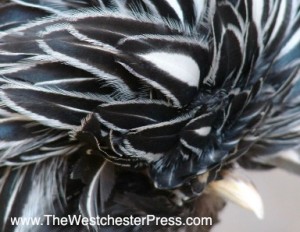
My Silver Laced Polish chickens were some of the sweetest in the flock, and the easiest to catch and snuggle, maybe because they couldn’t see or hear as well as the other chickens. But hey, this is a fabulous face. That is it’s face… all those fabulous feathers are the face.
100 years ago, I wouldn’t have had much choice in chickens.
I would have been limited to whatever chickens my neighbors raised.
Today I can choose my chickens based on all kinds of preferences:
- big or small,
- brightly colored or monochrome,
- weird combs or standard,
- old breeds or new,
- mellow or feisty.
Now, I know enough to choose a bird that is well suited to my climate – but only because I didn’t choose properly the first time around.
My fancy top-hat Polish chickens were not comfortable in the minus 10 degree winter days of Northern New Mexico. They would spend all day under the low hanging heat lamp, regularly torching their top hat feathers into little puffs of smoke.
I also didn’t realize that the kinds of chickens that lay lots and lots of huge, perfect eggs are not always the same kind of chickens that sport fantastically decorated feathers.
Since my egg and feather business at www.TheFeatheredEgg.com offers blown eggs and natural feathers that were raised with love and care in my own small flock, I wanted exotic feathers from my hens, and so my second flock was full of exotic wonders.
They didn’t lay well at all.
And I learned that heritage breeds of chickens, ducks, and turkeys were definitely healthier, hardier, and more able to beat me at chess.
I learned that if I want eggs… I should choose a heritage egg layer.
If I want meat, I should stick with the broiler breeds – which will also lay eggs, and some of them will lay very well.
And if I want feathers, really special feathers, I’m going to have to compromise on both eggs and meat.
Beauty comes at a price.
There is a super-cool chicken selector tool at www.MyPetChicken.com to help with this process… I could spend hours on that thing! It’s so fun!
Faverolles, Chantecler, Minorca, Australorp – ah, that one I had, White Leghorn – great chicken although not heritage – mega egg layer, Cubalaya… whassa cubalya?,
I should stop….
maybe one more spin on the chicken selector tool… really, I should stop… just one more time….

